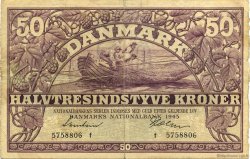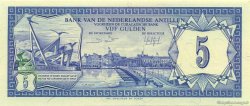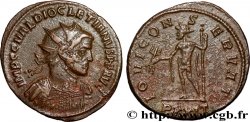v23_0906 - BALLON (BALAIONNVM) - Sarthe, arrondissement du Mans Triens, monétaire ISOBAUDES
MONNAIES 23 (2004)
Начальная цена : 2 200.00 €
Назначить цену : 3 500.00 €
Цена реализации : 3 600.00 €
Количество ставок : 5
Максимальная предлагаемая цена : 3 600.00 €
Начальная цена : 2 200.00 €
Назначить цену : 3 500.00 €
Цена реализации : 3 600.00 €
Количество ставок : 5
Максимальная предлагаемая цена : 3 600.00 €
Тип Triens, monétaire ISOBAUDES
Дата: (VIIe siècle)
Монетный двор / Город: BALLON (Sarthe)
Металл: gold
Диаметр: 10,5 mm
Ориентация осей монеты: 6 h.
Вес: 1,19 g.
Редкость: R3
Комментарии о состоянии
Exceptionnelle monnaie, bien centrée sur un petit flan. Trace de coin rouillé au droit
Ссылки в каталоге: :
Происхождение:
Cette monnaie provient de la collection du Vicomte Ponton d’Amécourt ; elle est illustrée dans son ouvrage (1883) sous le n° 49 et est reprise dans le Belfort sous le n° 620. Elle aurait été achetée en avril 1953
Лицевая сторона
Аверс: легенда: BALAIONN.
Аверс: описание: Buste au type de l’appendice perlé à droite, légende autour.
Обратная сторона
Реверс: легенда: +ISAVBODE.
Реверс: Описание: Croix ancrée accostée de deux croisettes et fichée sur un globe.
Комментарий
Les descriptions donnent la légende BALAIONNO, alors que les dessins et vis-à-vis illustrant la monnaie ne représentent pas le dernier O. Semble être des mêmes coins que l’exemplaire illustrant le Prou, n° 435.
Le style cénoman est bien caractérisé par le profil concave ; l'ourlet de perles est une imitation du chaperon d'Amboise. Le nom de la ville est lu BALATONNO dans le Prou, alors que Belfort et d'Amécourt mettent BALAIONN. C'est incontestablement la ville de Ballon ; selon Ponton d’Amécourt, “l'épigraphie monétaire se conformant à la prononciation vulgaire a devancé les textes manuscrits dans l'altération de la forme ancienne. Les textes ont en effet conservé jusqu'au XIe siècle la dentale que le langage populaire avait altéré dès le VIIe. Les espèces émises avec le nom d'Isobaudes correspondent aux grandes émissions de Vinovaldus au Mans et de Mallebodus à Souillé. Le nom d'Isobaudes ne se trouve pas dans d'autres ateliers. Il paraît être l'association hybride de IESVS ou peut-être HESVS avec le suffixe germain ALT modifié en BALD et BAVD” (cf. Recherche des monnaies mérovingiennes du Cenomanicum, pages 99-101).
The descriptions give the legend BALAIONNO, while the drawings and the opposite illustrating the coin do not represent the last O. Seems to be from the same dies as the example illustrating the Prou, n° 435. The Cenoman style is well characterized by the concave profile; the pearl hem is an imitation of the chaperon of Amboise. The name of the city is read BALATONNO in the Prou, while Belfort and d'Amécourt put BALAIONN. It is incontestably the city of Ballon; According to Ponton d'Amécourt, \\\"monetary epigraphy conforming to the common pronunciation preceded the handwritten texts in the alteration of the ancient form. The texts in fact retained until the 11th century the dentalium that popular language had altered from the 7th. The coins issued with the name Isobaudes correspond to the large issues of Vinovaldus in Le Mans and of Mallebodus in Souillé. The name Isobaudes is not found in other workshops. It appears to be the hybrid association of IESVS or perhaps HESVS with the Germanic suffix ALT modified into BALD and BAVD\\\" (see Research into Merovingian coins from the Cenomanicum, pages 99-101)
Le style cénoman est bien caractérisé par le profil concave ; l'ourlet de perles est une imitation du chaperon d'Amboise. Le nom de la ville est lu BALATONNO dans le Prou, alors que Belfort et d'Amécourt mettent BALAIONN. C'est incontestablement la ville de Ballon ; selon Ponton d’Amécourt, “l'épigraphie monétaire se conformant à la prononciation vulgaire a devancé les textes manuscrits dans l'altération de la forme ancienne. Les textes ont en effet conservé jusqu'au XIe siècle la dentale que le langage populaire avait altéré dès le VIIe. Les espèces émises avec le nom d'Isobaudes correspondent aux grandes émissions de Vinovaldus au Mans et de Mallebodus à Souillé. Le nom d'Isobaudes ne se trouve pas dans d'autres ateliers. Il paraît être l'association hybride de IESVS ou peut-être HESVS avec le suffixe germain ALT modifié en BALD et BAVD” (cf. Recherche des monnaies mérovingiennes du Cenomanicum, pages 99-101).
The descriptions give the legend BALAIONNO, while the drawings and the opposite illustrating the coin do not represent the last O. Seems to be from the same dies as the example illustrating the Prou, n° 435. The Cenoman style is well characterized by the concave profile; the pearl hem is an imitation of the chaperon of Amboise. The name of the city is read BALATONNO in the Prou, while Belfort and d'Amécourt put BALAIONN. It is incontestably the city of Ballon; According to Ponton d'Amécourt, \\\"monetary epigraphy conforming to the common pronunciation preceded the handwritten texts in the alteration of the ancient form. The texts in fact retained until the 11th century the dentalium that popular language had altered from the 7th. The coins issued with the name Isobaudes correspond to the large issues of Vinovaldus in Le Mans and of Mallebodus in Souillé. The name Isobaudes is not found in other workshops. It appears to be the hybrid association of IESVS or perhaps HESVS with the Germanic suffix ALT modified into BALD and BAVD\\\" (see Research into Merovingian coins from the Cenomanicum, pages 99-101)








 Cообщить об ошибке
Cообщить об ошибке Распечатать страницу
Распечатать страницу Отправить мой выбор
Отправить мой выбор Задать вопрос
Задать вопрос Consign / sell
Consign / sell










